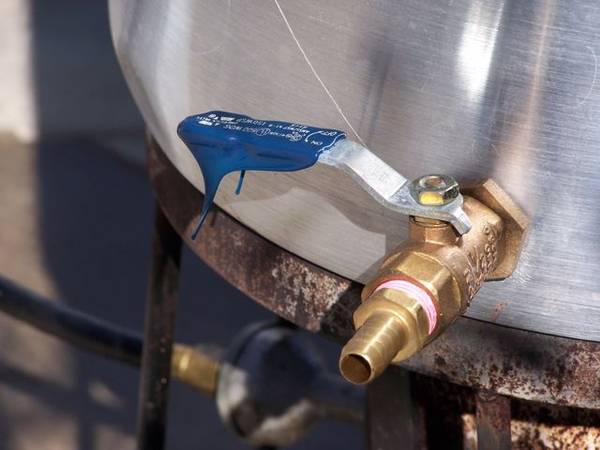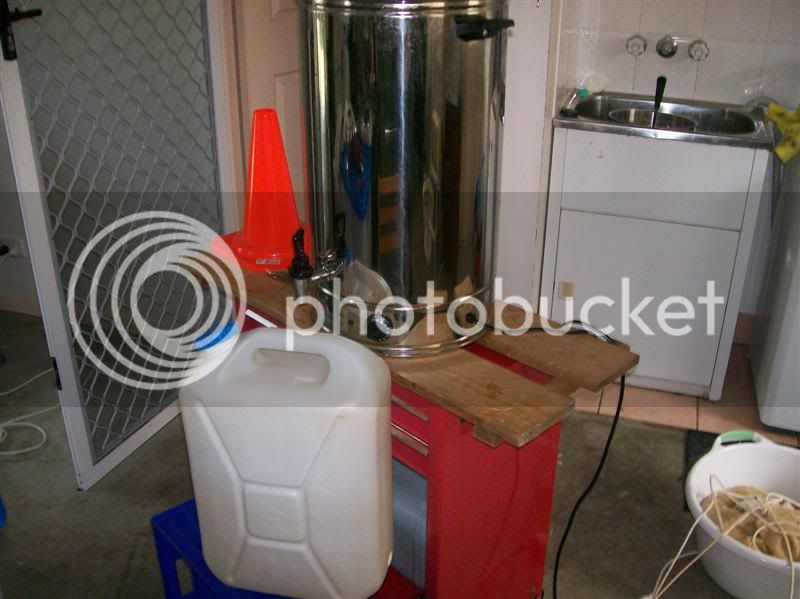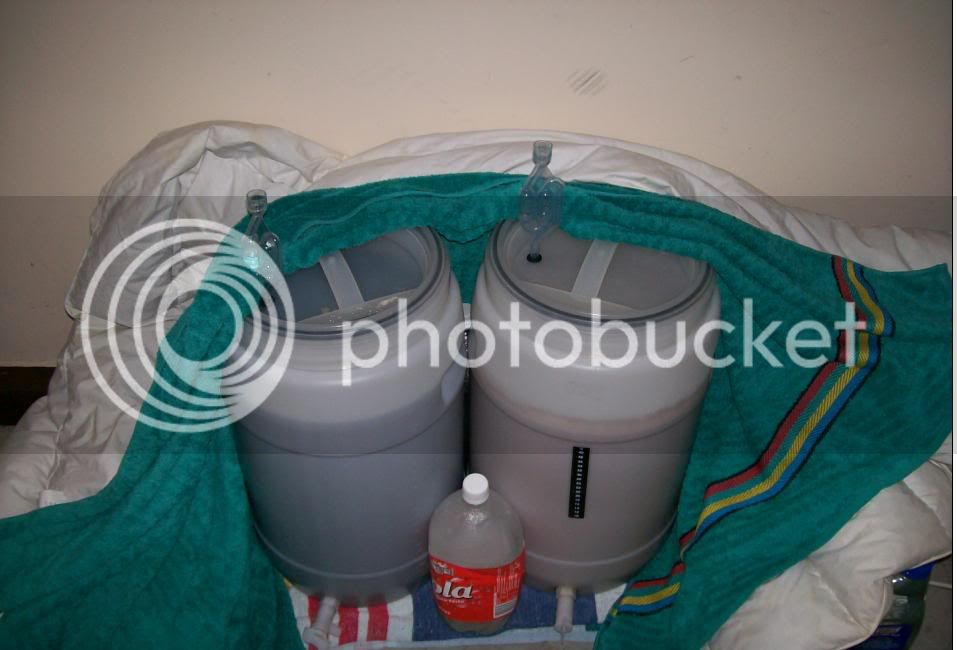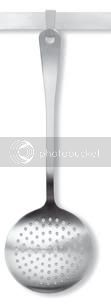This is for those brewers interested in Brew-in-a-Bag and/or No-Chill brewing. This isn't really a how-to, as there are a few really good ones. This is more of a "Here's what I've got, and it's easy!" type of thread.
The following photos were taken on a non-brewing day while I was trying to build up an oxidized layer in my kettle, so no grain bag or tubing.
Here's my setup (reusable coffee cup not included):

It consists of:
I use my mash spoon to prop the basket up off the internal parts during the mash, preventing pressure that leads to bending and/or leaking. (picture to come)
The large grain bag fits nicely over the steamer basket, meaning I can contain the grain and not have to worry about the bag breaking. I heat the water and grain together, so in order to not overheat, I have to stir often. Otherwise, the bottom of the mash will be a lot hotter than the top where the thermometer is, and you will overshoot your mash temp!
When it comes to draining/straining the grains, many people without strainers have to figure out a way to suspend their grain bag above the kettle. Here's what I do:

From this position, I can squeeze additional liquid out of the grain with a spoon, hand, or whatever, again without having to worry about the bag breaking. Just make sure the basket can't/won't slip.
I am horrible at maintaining a siphon, and siphoning boiling-hot liquid makes the matter much more difficult. I tried using a stainless racking cane with silicone tubing, but it just didn't work. So since it's easier than trying to make my own heat-proof auto-siphon, I drilled the kettle and added a ball valve. This way, when I'm done with the boil, I just hook up the silicone tubing to the ball valve, insert it into the Winpak, and let 'er rip! However, if you add a ball valve, be careful. Here's what happened to me:

That's right, the plastic on the handle melted right off!
Once you're done transferring to the Winpak, squeeze out excess air, seal tightly with the lid, and rotate on its side for about 10 minutes to sanitize the top.
By doing BIAB and No-Chill, my brew session is significantly shortened, cleanup is a breeze, and if I so choose, I can ferment right in the Winpak.
I highly recommend this method to anyone who:
If there are any other parts of my setup you'd like to see, just comment and let me know. I'll try to add as requested.
The following photos were taken on a non-brewing day while I was trying to build up an oxidized layer in my kettle, so no grain bag or tubing.
Here's my setup (reusable coffee cup not included):

It consists of:
- (1) Propane burner/turkey fryer with 15 lb propane tank
- (1) 70-quart aluminum kettle with steamer basket, weldless bulkhead from Bargain Fittings, a ball valve, and a bazooka screen
- (1) Extra-large (2'x3') grain bag (not pictured)
- (1) 6-gallon HDPE Winpak from US Plastics (the white vessel)
- Silicone tubing from McMaster-Carr (not pictured)
I use my mash spoon to prop the basket up off the internal parts during the mash, preventing pressure that leads to bending and/or leaking. (picture to come)
The large grain bag fits nicely over the steamer basket, meaning I can contain the grain and not have to worry about the bag breaking. I heat the water and grain together, so in order to not overheat, I have to stir often. Otherwise, the bottom of the mash will be a lot hotter than the top where the thermometer is, and you will overshoot your mash temp!
When it comes to draining/straining the grains, many people without strainers have to figure out a way to suspend their grain bag above the kettle. Here's what I do:

From this position, I can squeeze additional liquid out of the grain with a spoon, hand, or whatever, again without having to worry about the bag breaking. Just make sure the basket can't/won't slip.
I am horrible at maintaining a siphon, and siphoning boiling-hot liquid makes the matter much more difficult. I tried using a stainless racking cane with silicone tubing, but it just didn't work. So since it's easier than trying to make my own heat-proof auto-siphon, I drilled the kettle and added a ball valve. This way, when I'm done with the boil, I just hook up the silicone tubing to the ball valve, insert it into the Winpak, and let 'er rip! However, if you add a ball valve, be careful. Here's what happened to me:

That's right, the plastic on the handle melted right off!
Once you're done transferring to the Winpak, squeeze out excess air, seal tightly with the lid, and rotate on its side for about 10 minutes to sanitize the top.
By doing BIAB and No-Chill, my brew session is significantly shortened, cleanup is a breeze, and if I so choose, I can ferment right in the Winpak.
I highly recommend this method to anyone who:
- doesn't have an outdoor water source (me)
- wants to lessen cleanup time (me)
- wants to cut back on water usage (me)
- has time to brew, but maybe not time to pay attention to the fermentation.
If there are any other parts of my setup you'd like to see, just comment and let me know. I'll try to add as requested.




